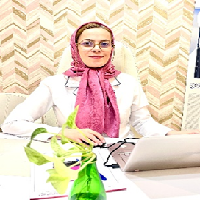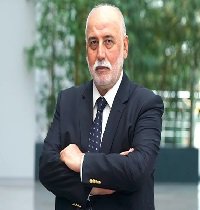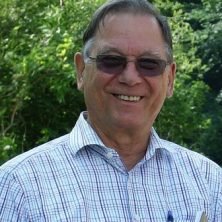Yaz Y. Kisanuki

Yaz Y. Kisanuki
Abstract:
Cerebrotendinous xanthomatosis (CTX) is a rare autosomal recessive genetic and metabolic disorder caused by a deficiency in the enzyme sterol 27-hydroxylase, which results from biallelic pathogenic variants in the CYP27A1 gene. This enzyme plays a critical role in the synthesis of bile acids. Its deficiency leads to the accumulation of toxic metabolites, affecting several organs, including the gastrointestinal systems (e.g. refractory diarrhea), eyes (cataracts), tendons (xanthomas), bones (osteoporosis), and the nervous systems. Among these, neurological symptoms impacting both the central and peripheral nervous systems (CNS/PNS) are the most debilitating. Common CNS manifestations include cerebellar degeneration/ataxia, leukoencephalopathy, and myelopathy, while PNS involvement presents as neuropathy. Once patients develop neurological symptoms, these can become irreversible and degenerative over time, even with treatment. Some patients may experience reduced life expectancy due to complications related to dementia from leukoencephalopathy and/or cerebellar ataxia. Therefore, early diagnosis and treatment, ideally during the “pre-neurologic” phase, are crucial for patients with CTX. Until recently, CTX patients have been treated with “off-label” use of either chenodeoxycholic acid (CDCA) or cholic acid, based on anecdotal evidence of their benefits. To seek FDA approval for CDCA, a phase 3 multi-center randomized clinical trial (RCT) was recently completed. In my presentation, I will focus on the 3 following points: A) both typical and atypical clinical presentations of CTX; B) highlights of a recent RCT of CDCA for CTX, which resulted in the FDA’s approval of CDCA; and C) the practical use of biochemical analyses to optimize patient care.
Biography:
Dr. Kisanuki obtained his MD from the University of Tokyo. After his research training at the University of Texas Southwestern Medical Center in Dallas, he completed his neurology residency at the University of Michigan. He joined The Ohio State University Wexner Medical Center (OSUWMC) in Columbus, Ohio, as an Assistant Professor. He currently is a Clinical Associate Professor in the Department of Neurology at OSUWMC. He is recognized as a Fellow of both the American Academy of Neurology (FAAN) and the American Neurological Association (FANA). His research interests are centered on developing therapies for genetic cerebellar ataxias, PLS, and other genetic disorders such as HSP. He has significantly contributed to characterizing the rodent model of SPG6-hereditary spastic paraplegia (HSP), as well as conducting clinical research on primary lateral sclerosis (PLS) and other rare genetic disorders. Recently, he played a pivotal role in a multi-center Phase 3 clinical trial that led to the FDA approval of chenodeoxycholic acid for the treatment of cerebrotendinous xanthomatosis. Dr. Kisanuki organizes several specialized clinics, including: a multidisciplinary cerebellar symptom management clinic, a neurogenetic disorders clinic, and a spasticity clinic utilizing intrathecal baclofen pumps. He also serves as the residency program director for adult neurology residents.
Robert S. Smith
Abstract:
Nonpharmacologic treatment of coronary heart disease has an essential role in the successful treatment of cardiovascular disease (CVD). Despite our technological advances, heart disease continues to be the leading cause of death not only in the United States but also across the westernized world. Many organizations have spoken about the need for lifestyle modifications and dietary changes as an important method to prevent and treat CVD. This presentation reviews current evidence related to the nonpharmacologic treatment of CVD, the benefits of physical activity (PA) and the adverse effects of sedentary behavior, the pathophysiology associated with physical and dietary habits. The overall health benefits of simple nonpharmacologic treatments include exercise, diet, nutrition, stress management, contemporary technology, barriers and social determinants of health, and recommended strategies for implementation of this treatment modality.
Biography:
Dr. Robert Smith, DHSc, PA-C, is employed by Pediatric Associates Family of Companies (PAFC / MDMG) in Family Medicine (FM) as the Regional Lead Clinician (RLC) for Family Medicine and consults patients at Clinicas Mi Doctor in Irving TX. He is a veteran of the U.S. Coast Guard. Graduated from PA School at the University of California, Davis FNP/PA program. Master of Science (MS), at Arizona School of Health Sciences, Doctor of Health Science (DHSc), and a Graduate Certificate in Education (Ed), A.T. Still University, College of Graduate Health Studies. Dr. Smith actively serves in professional organizations, He has completed original research, which includes validating the PHQ-9 in Spanish, published in Journal of National Hispanic Medical Association (JNHMA) and has authored and published other papers, on topics such as the use of AI Scribes, Diabetes, Hypertension, and most recently on Managing Lifestyle Management: Diet, Exercise, and other Nonpharmacologic Interventions. Dr. Smith actively teaches and precepts students in clinic.
Krasavina Diana A
Abstract:
Introduction. The issue of sialorrhea today has not only a social dimension but also a serious clinical aspect. The significant functional changes in a child (such as the absence of walking and reduced cognitive and speech defects) often overshadow sialorrhea. In reality, it is a severe deficit that includes anterior sialorrhea—saliva leakage from the oral cavity—which leads to skin maceration, the onset of skin infections, as well as more serious posterior sialorrhea that can cause complications such as aspiration pneumonia and bronchitis. At the current stage of medical development, the correct involvement of an interdisciplinary team for such patients reduces disease risks by decreasing saliva secretion through botulinum therapy. Objective of the study. To assess the effectiveness of reducing sialorrhea in children with cerebral palsy (CP) using injections of botulinum toxin into the parotid and submandibular glands, followed by activation of oromandibular muscles through individualized exercises and physical therapy under ultrasound navigation, utilizing international tests. Materials and methods. In a group of patients (8 boys, 7 girls) aged 2 to 12 years with CP GMFCS III-V and sialorrhea, testing was conducted to determine the degree of sialorrhea. Measurements included assessing unstimulated salivary flow rate (uSFR) and counting drool bibs before and after botulinum therapy. The third scale used was the DIS scale. Doses for botulinum therapy were registered based on specific weight and age, administered under ultrasound navigation to the submandibular and parotid glands at doses ranging from 6 to 22 units. Three weeks later, control dynamics were assessed across all scales, and exercises were selected to improve swallowing reflexes in children. A self-instruction manual with exercises for the oromandibular system was utilized. Results. All children showed positive results following the injection of neurotoxin (Xeomin), marked by a reduction in saliva secretion reported by parents and confirmed by international scales for involuntary salivation. In 6 out of 8 boys and 7 out of 7 girls, individualized physical therapy sessions and work with a speech therapist improved swallowing reflexes and control over the oral cavity and lips. Conclusions. The use of botulinum toxin type A for sialorrhea in children with CP is an important method for treatment and rehabilitation. It is necessary to develop standardized questionnaires for parents prior to examination by an interdisciplinary team aimed at treating such children.
Biography:
Diana Alexandrovna Krasavina is a professor at the Federal State Budgetary Educational Institution of Higher Education Saint Petersburg State Pediatric Medical University of the Ministry of Health of the Russian Federation. She graduated from the Pediatric University in 1990, after which she studied at the University of Chiropractic Medicine in Prague and mastered chiropractic therapy methods at the Shaolin Monastery. In 1997, she defended her candidate dissertation on the topic “Vertebrogenic Dependent Cardiac Rhythm Disorders.” In 2013, she defended her doctoral dissertation on “Innovative Methods for Treating Pain Syndromes in Patients with Dorsalgias Using Botulinum Toxin and Individualized Physical Therapy Complexes.” For over 20 years, she has been treating sialorrhea, pain syndromes, and spasticity in children with traumatic brain injuries and cerebral palsy. She possesses expert knowledge in the fields of traumatology, orthopedics, botulinum therapy, and rehabilitation. She has published more than 300 works on the rehabilitation of vertebrological patients and the treatment of children with cerebral palsy using botulinum therapy and other rehabilitation methods. She holds 2 patents for inventions. She was the first in Russia to register a method for alleviating the spastic-dystonic form of Wilson-Konovalov disease. Her areas of scientific interest include alleviating pain syndromes using botulinum toxin, correcting facial nerve neuritis in children, and botulinum therapy for cerebral palsy.
Zama N.P. Msibi
Abstract
Nanotechnology is a growing field that has widely documented the surface binding capabilities of gold nanoparticles (AuNPs). This makes them potentially useful gene vectors for the transfer of defective enzymes in Parkinson’s disease (PD), a neurodegenerative disorder resulting in neuroinflammation and neuronal cell destruction. We investigated the long-term effects of AuNPs in the striatum of a 6-hydroxydopamine (6-OHDA)-induced parkinsonian rat model. AuNP-conjugated transgene constructs (AuNP-DNA) of human aromatic acid decarboxylase (AADC) mixed with GTP cyclohydrolase 1 (GCH1) (1:1) was stereotaxically delivered to the striatum of either saline or 6-ODHA-lesioned Sprague Dawley rats. Long-term effects of AuNP-mediated gene therapy was evaluated on behavior, pro-inflammatory cytokine IL-1β expression, morphology of striatal microglia, dopamine biosynthesis and transgene expression. The 6-OHDA-induced neurobehavioral deficits were mitigated in gene therapy groups. This finding was correlated with significantly improved dopamine biosynthesis, inhibition of long-term expression of IL-1β, and suppression of sustained microglial activation. Both human AADC and GCH1 transgenes were differentially expressed in the groups that underwent gene therapy. This suggests a successful AuNP-mediated transgene expression in the striatum, allowing for effective uptake and transcription of AADC and GCH1 for DA re-synthesis. Furthermore, an IL-1β- and microglial-mediated inflammatory response was attenuated, preventing or suppressing neuroinflammation that is implicated in PD pathology. Further studies detailing the mechanism of cellular uptake and transgene expression may be useful in determining the success of AuNPs as gene vectors in PD treatment.
Biography:
Dr Zama Msibi is an early career researcher and Lecturer in the School of Laboratory Medicine and Medical Science at the University of KwaZulu-Natal (UKZN). She has supervised and graduated more than 10 post-graduate students in the field of Neuroscience. Her research focus includes: Parkinson’s disease – Pathology and Treatment, Nanotechnology, Molecular Biology, Gene Therapy, Cerebrovascular dysfunction, Neurocysticercosis, Hydrocephalus and Psychosis – where she collaborates with a team of Psychiatrists, Neurosurgeon and Basic sciences researchers. Dr Msibi is passionate about bridging the gap between basic science research and clinical research and is involved in multiple clinical research projects and activities. Dr Msibi also serves a Secretary General in the executive committee for the Sothern African Neuroscience Society.
Konomi Ikeda
Abstract:
Introduction: According to International classification of sleep disorder (ICSD-3), overnight polysomnography (PSG) is the gold standard examination for the diagnosis of pediatric obstructive sleep apnea (OSA). However, most of the patients in Japan are not able to access the specialized sleep medical facilities for PSG due to less availability and cost issues. Purpose of this study is to examine whether combination of video monitoring items and other clinical examinations can reliably predict the severity of pediatric OSA compared with PSG. Methods: The study subjects were children diagnosed with sleep related breathing disorder (SRBD) who attended the Department of Otorhinolaryngology at Ota General Hospital between 2012 to 2019. A total of 175 cases were included in this individual retrospective-cohort study, consisting of 122 boys and 53 girls, with ages from 3 to 12 years (median: 8.00). Clinical data included the children’s medical history, physical examinations, imaging cephalograms, rhinomanometry, and PSG with video monitoring performed by sleep technicians for all patients. Multiple linear regression analyses were performed to identify independent predictors significantly related to the severity of OSA (AHI: apnea hypopnea index, 5/h and 10/h). Results: For AHI greater than 5/h, the independent predictors were nocturnal oximetry(PSG-ODI 3%>3/h), total nasal resistance, tonsil size, one video monitoring item, and the total video monitoring score. The accuracy of this predictive statistic model was 88.0% (sensitivity 78.3%, specificity 93.0%). For AHI greater than 10/h, the independent predictors included facial axis of cephalogram, nocturnal oximetry (PSG-ODI 3%>5/h),, and BMI <15, along with video monitoring parameters such as whole-night inspiratory noise (loud) and chest retraction. The sensitivity of this model was 88.7%, specificity was 84.1%, and accuracy was 86.9%, which is much higher than the accuracy of the model without video monitoring score. Conclusions: Instead of relying solely on PSG, the combination of video monitoring score and multiple clinical examinations could provide a reliable diagnostic approach for pediatric OSA. These results will support the establishment of more efficient diagnostic strategies for both patients and physicians.
Biography:
Konomi Ikeda is a Chief of the otorhinolaryngology department at Atsugi city hospital in Kanagawa, Japan. With expertise in Sleep medicine, she had contributed significantly to organize the 48th annual meeting of Japanese society of sleep research. Her research interests include sleep disorders and developmental disorders.
Maryam Zahedi
Abstract:
This study assessed the effect of an exercise program on balance measurements, vibration sense, walking speed, and cardiometabolic parameters in patients with diabetic peripheral neuropathy (DPN). The pre-and post-testing designs were used in this randomized clinical trial with 44 patients with DPN who were randomly assigned to equal control and exercise groups (n = 22). The intervention was an 8-week program comprising balance and proprioceptive exercises in 3 weekly sessions. The hemoglobin A1C (HbA1c), fasting plasma glucose (FPG), triglycerides, high-density lipoprotein cholesterol (HDL-C), low-density lipoprotein cholesterol (LDL-C), total cholesterol (TC), balance, vibration sense, and walking speed were assessed. The time up and go (TUG) test and the Berg balance scale were used to measure dynamic and static balance. After adjusting for their baseline, we applied analysis of covariance (ANCOVA) to test the comparison of all parameters between the two groups at the end of the study. We observed significantly improved vibration sense and walking speed in the exercise group compared to the control group. We also observed a significant decrease in TUG, body weight, FPG, LDL-C, TC, and triglycerides and a significant increase in HDL-C levels after 8 weeks of exercise in the intervention group compared to the control group. The results showed that the exercise program improved balance and vibration sense, walking speed, lipid profile, body weight, and FPG in patients with DPN. This exercise program seems appropriate and can be influential in managing these patients and medication.
Biography:
She is an assistant professor of Endocrinology at Golestan University of Medical Sciences (GOUMS). She is professional in the diagnosis and management of Diabetes mellitus, thyroid disorders, calcium, phosphorus, bone metabolism, and reproductive disorders, including hypogonadism, hirsutism, gynecomastia, etc. She has a 10-year history of clinical practice and research in internal medicine and endocrinology. She also trained several medical students. She has several published articles in the field of endocrinology, and she is ongoing research in these fields.
Haluk Kelestimur
Abstract:
Asprosin, an adipokine released from the white adipose tissue during fasting, was first discovered in patients with neonatal progeroid syndrome. Asprosin is encoded by the fibrillin 1 (FBN1) gene, weighs approximately 30 kDa, and consists of 140 amino acids. Asprosin is an orexinergic hormone that modulates hepatic glucose release and hence has a role in metabolic processes. Recent studies suggest that asprosin may extend its influences on reproductive and sensory physiology, impacting various neuroendocrine pathways associated with sexual maturation and behavior in mammals. Studies indicate that while asprosin does not typically alter the timing of puberty onset, it is associated with the advancement of specific reproductive milestones in both sexes. In males, asprosin has been linked to enhanced sexual motivation and an accelerated ejaculation phase, while in females, it is associated with the advancement of the first estrus phase and heightened sexual exploration. Additionally, asprosin appears to improve olfactory performance in both male and female subjects, possibly through olfactory receptor-mediated pathways, suggesting a role in sensory processing that may complement its reproductive functions. Asprosin has been shown to act by binding to the OLFR734 receptor, which is an olfactory receptor. Asprosin has been shown to elevate levels of key reproductive hormones, such as corticosterone, folliclestimulating hormone (FSH), estrogen, and oxytocin, which are critical for sexual maturation and function. Furthermore, histological analyses have revealed its stimulatory effects on ovarian follicle development in females and enhanced testicular activity in males, underscoring asprosin’s potential role in promoting reproductive tissue development. Overall, asprosin emerges as a multi-functional hormone influencing both neuroendocrine and sensory pathways. Its roles in sexual behavior, olfactory performance, and hormone regulation highlight asprosin as an important contributor to mammalian reproductive and sensory physiology. These insights broaden the understanding of adipokines in endocrine signaling and suggest potential therapeutic applications for asprosin in treating reproductive and metabolic disorders. This study was supported by TUBITAK (Project # 220S744).
Biography:
Dr Haluk Kelestimur is a Professor of Physiology in Istanbul Okan University. He gained his PhD in Physiology in 1984 from the University of Firat, Turkey. He then completed his postdoctoral training at University College London in 1988. After he worked 42 years in Firat University, he began to work in Istanbul Okan University in 2022. His work focusses on neuroendocrinology. Professor Haluk Kelestimur was elected to membership in the
International Union of Physiological Sciences Academy in 2021.
Hubert Loffler
Abstract:
In this presentation. I examine the relationship between space and time in neuronal information processing. Neurons communicate via electrical impulses (spikes), and the spatial and temporal patterns of these spikes are essential for brain function. I will discuss how brain oscillations can convert temporal spike patterns into spatial ones and vice versa, allowing the brain to switch flexibly between spatial and temporal coding depending on the situation. Previous models, such as “Tempotron” and “ReSuMe,” could recognize spike patterns or generate precise outputs but were unable to directly store these patterns. Together with Gupta and Bahmer, I developed a model that links the timing of spikes to the spatial structure of a neuron’s dendritic tree or to ensembles of neurons using oscillations, enabling the single neuron or the ensemble of neurons to remember and reproduce precise temporal patterns. Research shows that different types of sensory information are coded differently: auditory and tactile stimuli often rely on spatial coding, while sensory intensity is typically encoded temporally. Brain oscillations are key to enabling the transformation between these coding forms. We demonstrate how a spatial input can be converted into a temporal spike train, stored, transmitted to distant locations, and recalled through spike bursts similar to Sharp Wave Ripples. This temporal representation can also be transformed back into a spatiotemporal pattern. Using a simple feed-forward spiking neural network, we illustrate the principles of this transformation, where the frequencies and phases of Subthreshold Membrane Oscillations play a critical role. The model provides insights into multiplexing information and phenomena like stretching or compressing the time of spike patterns. Temporal coding could also be crucial for processes like pattern separation, where even very similar spatial patterns trigger distinct temporal responses in a neuron. In summary, I highlight how the brain enhances information processing by flexibly utilizing both spatial and temporal coding, with oscillations being fundamental in mediating these transitions.
Biography:
Hubert Löffler is a private researcher in Austria, working on neural coding based on spiking neural networks.
Haiyan Liu
Abstract:
Cerebral autoregulation (CA) dysfunction is a strong predictor of clinical outcome in patients with acute brain injury (ABI). CA dysfunction is a potential pathologic defect that may lead to secondary injury and worse functional outcomes. Early therapeutic hypothermia (TH) in patients with ABI is controversial. Many factors, including patient selection, timing, treatment depth, duration, and rewarming strategy, impact its clinical efficacy. Therefore, optimizing the benefit of TH is an important issue. This paper reviews the state of current research on the impact of TH on CA function, which may provide the basis and direction for CA-oriented target temperature management (TTM).
Biography:
Haiyan Liu is an associate chief physician & clinical nutritionist at Neurocritical Care Unit of The First Affiliated Hospital of USTC, Anhui, China. With expertise in acute brain injury, she has contributed significantly to study on cerebral autoregulation in acute brain injury.
Alyson Baker
Abstract:
The development of status myoclonus (SM) in a post-cardiac arrest patient has historically been thought of as indicative of not only a poor neurologic outcome but of neurologic devastation. In many instances, this may lead clinicians to initiate conversations about withdrawal of life sustaining therapies (WLST) regardless of the time from return of spontaneous circulation (ROSC). Recent studies showing a percentage of patients may make a good recovery has called into question whether a self-fulfilling prophecy has developed where the concern for a poor neurologic outcome leads clinicians to prematurely discuss WLST. The issue is only further complicated by changing terminology, lack of neuro-axis localization, and limited data regarding association with electroencephalogram (EEG) characteristics, all of which could aid in the understanding of the severity of neurologic injury associated with SM. Here we review the initial literature reporting SM as indicative of poor neurologic outcome, the studies that call this into question, the various definitions of SM and related terms as well as data regarding association with EEG backgrounds. We propose that improved prognostication on outcomes results from combining the presence of SM with other clinical variables (eg. EEG patterns, MRI findings, clinical exam). We discuss the ethical implications of using SM as a prognostic tool and its impact on decisions about life-sustaining care in children following cardiac arrest. We advocate for prognostication efforts to be delayed for at least 72 hours following ROSC and thus to treat SM in those early hours and days.
Biography:
Dr. Alyson Baker received her medical degree from Saint Louis University School of Medicine in St Louis, Missouri. She completed her pediatric residency at Connecticut Children’s Medical Center at University of Connecticut, pediatric critical care fellowship at Riley Hospital for Children at Indiana University and pediatric neurocritical care fellowship at St Louis Children’s Hospital at Washington University in St Louis MO. She is an assistant professor of Pediatrics in Pediatric Critical Care at UNMC College of Medicine. Dr. Baker’s clinical interests include treating all critically ill children, but has a passion for those with neurocritical conditions including such conditions as status epilepticus, stroke and traumatic brain injury.
Horacio de la Nuez Leon
Abstract:
INTRODUCTION: The hypothesis explored in this research aimed to validate whether the incorporation of neuroemotional tools, combined with positive emotions in the leadership styles of executives and middle managers in the hotel sector, yielded favorable outcomes in restoring conflict-ridden work environments. Furthermore, this hypothesis examined the potential enhancement of both internal leadership protocols and employee performance.
OBJECTIVES: The primary objective of this research was to obtain empirical evidence regarding the actual influence of emotions and neuroemotional tools on employees’ attitudes and feelings within the hotel sector. The study focused on analyzing the impact on leadership effectiveness, staff response, and the transformation of a prevailing conflict-driven atmosphere.
METHODOLOGY: This scientific study was conducted in a prestigious hotel chain in the Canary Islands, specifically in four 3- and 4-star establishments in Gran Canaria. Two groups were formed: an experimental group and a control group, comprising 50 middle managers and 300 frontline employees, respectively. This research introduced several groundbreaking innovations, including a direct focus on personnel rather than the company, the strategic use of music with different frequencies depending on the intervention phase, as well as dance, laughter therapy, kinesiology, quantum physics, and various fields of neuroscience as necessary adjuncts. The study was structured into three phases: Opening, Healing, and Closure.
During the Opening phase, high-BPM songs were used to overcome existing rivalries. In the Healing phase, medium-frequency tones helped alleviate tensions, and finally, in the Closure phase, lower frequencies accompanied mindfulness and emotional regulation activities to reinforce social cohesion. Each phase was meticulously designed with specific activities tailored to the intended objectives. Participants completed pre- and post-intervention questionnaires measuring key variables such as work environment, emotional state, leadership perception, and organizational support, using a 5-point Likert scale.
RESULTS: The results demonstrated significant improvements in the experimental groups compared to the control groups. Notable enhancements included an increased perception of positive leadership, strengthening of organizational values, transformation of negative atmospheres into highly positive ones, a substantial reduction in interpersonal and interdepartmental tensions, and greater group cohesion. The innovative combination of the aforementioned tools was instrumental in achieving these outcomes.
CONCLUSIONS: Beyond the expected results, this research led to the emergence of a new field within neuroscience: Resonant Neuroscience. This integrative approach unites multiple disciplines to generate positive resonances in work environments. This new definition was officially presented at the International Conference on Neuroscience and Neurology, held in Amsterdam in November 2024. As a result, new neurological leadership models are emerging, designed to address VUCA (Volatile, Uncertain, Complex, and Ambiguous) contexts through interdisciplinary strategies that foster innovative leadership approaches in highly dynamic environments.
Biography:
Horacio de la Nuez is a PhD(c) in the Doctorate Program in Tourism, Economics and Management from the University of Las Palmas de Gran Canaria-11, Spain. With expertise in Hotel Management and Neurolidership, Neuroemotions, he has contributed significantly to the aplication of Neuroemotions on Hotel Sector in the Canary Islands. His research interests include the emergence of a new field within neuroscience: Resonant Neuroscience. This integrative approach unites multiple disciplines to generate positive resonances in work environments. this research led to Add the latest HD photo of the presenting author.
Prabha Muddobalaiah
Abstract:
Esterase family of Hydrolases such as Acetylcholinesterase (AchE), Butyrylcholinesterase (BchE) and Carboxyl esterase (CE) have been estimated in Alzheimer’s disease (AD) model, normal brain of striatum, frontal cortex, hippocampus and in liver. In AD a loss of
acetylcholine activity directly correlates with memory dysfunction due to the activation of acetylcholinesterase and butyrylcholinesterase enzymes. Therefore, the effective treatment methods include restoration of cholinergic function and elevation of ACh level through inhibiting AChE and BChE. Hence to inhibit these enzymes four commonly used Indian kitchen spices viz., Cuminum cyminum, Elettaria cardamomum, Cinnamomum verum, Syzygium aromaticum were selected because the extracts of these spices contain cholinesterase inhibitory activity in vitro. These spices were extracted with cold and hot aqueous solution and the anti- cholinesterase potential was measured in vitro. Elettaria cardamomum cold extract showed significant inhibition for AchE in all regions of brain for control and AD. Whereas Cinnamomum verum hot extract showed elevated activity for carboxyl esterase which is a neuroprotective factor. These findings suggest that dietary supplementation of cardamom and cinnamon in moderate amounts may aid in prevention delay in onset of AD. Acetylcholinesterase (AChE) acts on acetylcholine (ACh) to terminate its actions on the synaptic cleft by cleaving Ach to choline and acetate. This directly correlates with memory dysfunction and loss of cognitive functions in Alzheimer’s disease (AD) patients which was a continuous decline of the cholinergic neurotransmission in cortical and other regions of human brain. Specific activity and expression for AChEwere determined in LiCl2 treated young and old male wistar rat’s brain and liver (each n=5) with respective controls. Histogram showed lower AChE activity 6.16 ± 0.25 and 5.46 ± 0.066, respectively for 10 and 20 days LiCl2 treated old rats than their control 7.05 ± 0.15 μmoles/min/mg of protein. In contrast young brain lithium-treated showed higher AChE specific` activity 4.02 ± 0.158 and 6.15 ± 0.22, respectively than control 3.58 ± 0.03 μmoles/min/mg of protein. While 10 and 20 days lithium-treated old rat’s liver showed lower AChE specific activity 0.50 ± 0.080 and 0.40 ± 0.025, respectively than control 1.56 ± 0.11 μmoles/min/mg and young liver also showed lower AChE activity 0.38 ± 0.022 and 0.36 ± 0.015, respectively than their control 3.60 ± 0.08 μmoles/min/mg for the same period of lithium-treated young rats. Native gel AChEshowed lower AChE expression for 10 and 20 days LiCl2-treated old aged rat brain than control results similar to spectrophotometric assays. Therefore, lithium has negative effect on AChE which releases ACh to stimulate neuronal transmission for regulation of cellular signaling in brain and liver cell function.
Biography:
She has published 15 research articles and 8 conference proceedings publications. She was Post doctoral Fellow for CSIR RA fellowship 2008 at IISc. She has received the Distinguished woman in health and medical sciences-Biochemistry — From Venus International foundation, Chennai. 2019. She has been awarded as Bharat Shiksha Gaurava Puraskar – 2022 and Excellence for Best Educationist Award-2022 by KTK foundation, New Delhi. She got certificate for NPTEL Domain star–Biotechnology—Biosciences 2022. She has received the certificate for winner for Women Researcher Award– In the International Scientist Awards on Engineering, Science and Medicine, held on 04-Nov-2022, Organized by VDGOOD® Professional Association. She is an invited editor for Journal of Clinical Science & Translational Medicine, Journal of Biomedicine and Biosensor and Biochemical Engineering & Bioprocess Technology. She is invited as reviewer constantly for. Clinical and Translational oncology Springer publications, Cancer Biomarker and for Indian journal of Neurosciences. She is guiding PhD and many MTech /BE project students.
Naomi Osakabe
Abstract:
Human life develops and expands not only in time and space, but also in the retrograde permanent recollection and interweaving of memories. Therefore, individual human identity depends fully on a proper access to the autobiographical memory. Such access is hindered or lost under pathological conditions such as Alzheimer’s disease (AD), including recently associated oxidant pathologies, such as neural degeneration occurring in Parkinson’s disease (PD) or neurosensorial degeneration occurring in Menière’s disease. In our recent study we evaluated the effects of Hericium erinaceus, a nutritional mushroom with important antioxidant effects, in a rat model of AD. Hericium erinaceus administration reduced behavioral changes and hippocampal neuronal degeneration. Additionally, it reduced phosphorylated-Tau levels and aberrant APP overexpression and β-amyloid accumulation. Moreover, Hericium erinaceus decreased the prooxidative and pro-inflammatory hippocampal alterations induced by AD. In particular, it reduced the activation of the NLRP3 inflammasome components, usually activated by increased oxidative stress during the AD. Collectively, our results showed that Hericium erinaceus has protective effects on the behavioral alteration and histological modification associated with the AD acting by the modulation of the oxidative and inflammatory pathways, as well as regulating brain cellular stress. Herein, we discuss cellular mechanisms underlying AD neuroinflammatory pathogenesis that are contributory to Alzheimer’s disease. We describe endogenous cellular defence mechanism modulation and neurohormesis as a potentially innovative approach to therapeutics for AD and other neurodegenerative conditions that are associated with mitochondrial dysfunction and neuroinflammation, including Meniere disease patients as a measurable model of neurodegenerative neuro-cochleosensory system. Particularly, Vitagenes are emerging for their neuroprotective potential as well as the capability of Coriolus and Hericium nutritional mushrooms to burst redox stress responsive mechanisms leading to neuroprotection.
Ashkhen L Manukyan
Abstract:
Noise is considered one of the environmental hazards that negatively affect health. It can cause damage to the auditory, neurological, hormonal, and cardiovascular systems, in addition to impairing psychological and cognitive functions. In this study, we have examined the level of α-Tocopherol (α-T) and malondialdehyde (MDA) in plasma and the erythrocytes’ membrane (EM), as well as the behavioral characteristics of a noise-induced stress model in rats. In addition, the modulating effect of α2-adrenoblockers, beditin and mesedin, on the aforementioned parameters has been investigated. The “Open field” and “Y-maze” tests were used in order to evaluate the behavioral states of the rats.
Investigations were carried out on albino rats divided into 4 groups. The 1st group of rats served as a control. The 2nd, 3rd, and 4th groups were exposed to 91 dBA of noise; the duration of exposure was 8 h per day for 60 days. The 3rd group was injected with beditin and the 4th group with mesedin, both intraperitoneally and repeatedly. Increased MDA and decreased α-T levels in plasma and EM were observed upon chronic high-level noise exposure.
The “Open field” and “Y-maze” tests revealed that chronic noise exposure caused disturbances in behavioral activity, a noise duration-dependent delay in movement and orientation, increased anxiety, and a deficit in the animals’ spatial memory. The administration of α2-adrenoblockers to the noise-exposed animals had a regulatory effect of varying intensities, depending on the medication used and the studied parameters under the conditions of chronic acoustic stress.
Junjie He
Abstract:
Quantitative susceptibility mapping (QSM) has been applied to the measurement of iron deposition and the auxiliary diagnosis of neurodegenerative disease. There still exists a dipole inversion problem in QSM reconstruction. Recently, deep learning approaches have been proposed to resolve this problem. However, most of these approaches are supervised methods that need pairs of the input phase and ground-truth. It remains a challenge to train a model for all resolutions without using the ground truth and only using one resolution of data. To address this, we proposed a self-supervised QSM deep learning method based on morphology. It consists of a morphological QSM builder to decouple the dependency of the QSM on acquisition resolution, and a morphological loss to reduce artifacts effectively and save training time efficiently. The proposed method can reconstruct arbitrary resolution QSM on both human data and animal data, regardless of whether the resolution is higher or lower than that of the training set. Our method outperforms the previous best-unsupervised method with a 3.6% higher peak signal-to-noise ratio, 16.2% lower normalized root mean square error, and 22.1% lower high-frequency error norm. The morphological loss reduces by 22.1% training time with respect to the cycle gradient loss used in the previous unsupervised methods. Experimental results show that the proposed method accurately measures QSM with arbitrary resolutions, and achieves state-of-the-art results among unsupervised deep learning methods. Research on applications in neurodegenerative diseases found that our method is robust enough to measure a significant increase in striatal magnetic susceptibility in patients during Alzheimer’s disease progression, including subjective cognitive decline, mild cognitive impairment, and AD. A significant increase in susceptibility is detected in substantia nigra susceptibility in Parkinson’s disease patients. Our method can be used as an auxiliary differential diagnosis tool for Alzheimer’s disease and Parkinson’s disease.
Biography:
Junjie He Ph.D. student at Guizhou University, engaged in the application of computer vision in medical imaging, especially the MR reconstruction of QSM images and its application on neurodegenerative disorders. Publishing multiple papers in journals such as NeuroImage, Frontiers in Neuroscience, and Computer Methods and Programs in Biomedicine. Outstanding graduate of Nanjing University. Outstanding Individual Award and the Feature Star Award at Huawei Technologies. Angle Investment Recipient at Ericsson.
Konrad Sandhoff
Kenneth Olden
Claudia Angeli
Abstract
Emerging clinical data indicate that neuromodulation of the lumbosacral spinal cord restores motor and autonomic functions in those with chronic spinal cord injury. These discoveries provide evidence for the realistic potential of epidural stimulation to significantly improve function, health, and quality of life of those with chronic clinically incomplete and even complete spinal cord injury. To date, a major challenge related to the selection of stimulation parameters for promoting motor and autonomic function recovery in spinal cord injury individuals is that these parameters are task- and individual-specific. In addition, the combination of stimulation parameters potentially available is vast, as exemplified by the over 43 million different electrode configurations available when using a 16-electrode array. Our team relies on three components to guide tonic-interleaved functionally focused spinal cord epidural stimulation (scES). First, a neuroanatomical 3D spinal cord reconstruction model and intra-operative evoked potentials inform electrode lead placement. Second, spatial-temporal electrophysiological mapping informs motor and autonomic mapping. Lastly, task specific motor mapping and autonomic mapping will aid in identifying the tonic-interleaved functionally focused scES parameters. Immediate integrated movement and physiological responses to scES indicate the sophistication of the human lumbosacral spinal circuitry with the critical role for ongoing regulation of motor and autonomic function. We will present methods and tools for selection of task and individual configurations targeted for voluntary movement, standing, stepping, blood pressure stabilization and facilitation of bladder storage and emptying using tonic-interleaved excitation of the lumbosacral spinal cord. We will also present strategies used for selection of stimulation parameters for various motor and autonomic functions. Tonic-interleaved functionally focused neuromodulation targets a myriad of consequences from spinal cord injury with surgical implantation of the epidural electrode at a single location. This approach demonstrates the sophistication of the human spinal cord circuitry and important role in regulation of motor and autonomic functions in humans.
Biography
Dr. Claudia Angeli is an Assistant Professor in the Department of Bioengineering at the J.B. Speed School of Engineering, and Director of the Epidural Stimulation Program at the Kentucky Spinal Cord Injury Center at the University of Louisville. She also holds an adjunct appointment at Frazier Rehab Institute, University of Louisville Health. Her research background and interests are focused in understanding mechanisms of control of human locomotion following neurologic injury. She has examined the impact of activity-based retraining of the nervous system following spinal cord injury. Currently, Dr. Angeli has been studying the use of spinal cord epidural stimulation combined with intense activity-based therapies for the restoration of function following motor complete spinal cord injury. Epidural stimulation uniquely targets recovery of movement patterns and augments functional gains through increase excitability of the spinal networks. The results of these studies contribute to the knowledge about the fundamental mechanisms of control of human locomotion and provide strategies for the rehabilitation of patients after neurologic injury.



















